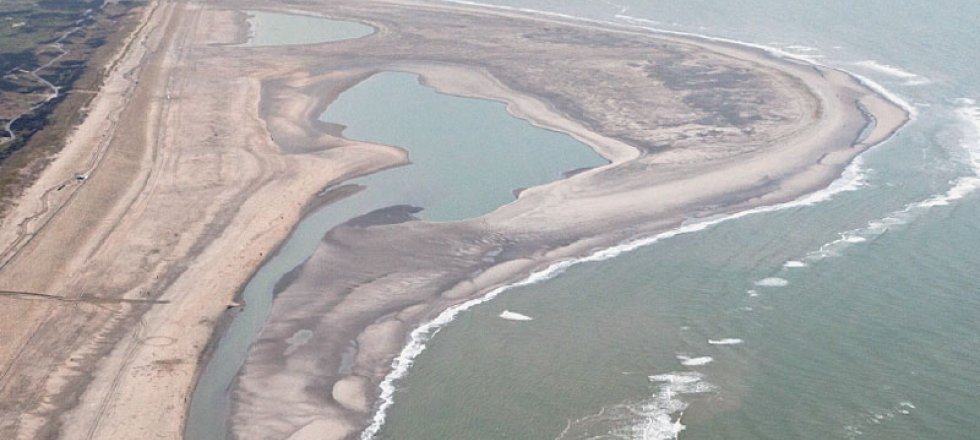Sand nourishment
Storms and tides altered by dams cause sand to erode from our coasts and deltas. This results in weakened dykes, and threatens foraging and resting areas for animals. Sand nourishment, where sand is extracted from the sea and deposited on shores, is a solution for this ‘sand starvation’. Wageningen Marine Research studies how to optimise sand mining and nourishment.
Sand nourishment Oosterschelde
The Oosterschelde suffers from sand starvation: the erosion of sandbanks and salt marshes. The construction of the storm surge barrier has decreased the tidal amplitude. To protect the foraging habitats of birds such as waders and the resting areas of seals, the Directorate-General for Public Works and Water Management (Rijkswaterstaat) has extracted sands from the tidal channels and deposited it on the sand banks in the Oosterschelde. Wageningen Marine Research has been commissioned by Rijkswaterstaat to study and evaluate the effect of these nourishments on the ecosystem and the yield of the adjacent commercial mussel beds.
At the Oesterdam, oyster reefs have been constructed in addition to sand nourishment as a means of protecting the coast. Oyster reefs help prevent erosion and provide a habitat for crabs and waders.
North Sea coast
The Sand Motor, a foreshore peninsula that is slowly being washed away and whose sand is spread along the South Holland coast near Kijkduin-Ter Heijde, is a megaproject. The construction of the Sand Motor has made frequent foreshore sand nourishments unnecessary. Research shows what is best for nature: depositing a large volume of sand at once, or frequently adding smaller volumes over time. Wageningen Marine Research monitors fish, macrobenthos, birds and sea mammals on the created sand flat and lagune, and along the Dutch coast.
A new dune area protecting the coast has emerged as the result of depositing sand near the Hondsbossche and Pettemer sea defence in North Holland. Wageningen researchers mapped the expected dune development of the area.
Wadden Sea sand nourishment
The possible results of sand nourishments are also being studied off the coast of the Wadden islands. We study the effect of nourishment in outer deltas on the foraging grounds of sandwich terns, a large bird that breeds in colonies on Texel, Griend and other Wadden islands.
How we can help
- Research, data and expertise on the effects of sand nourishment and sand extraction on habitats, populations and behaviour of birds, fish, benthos and sea mammals.

